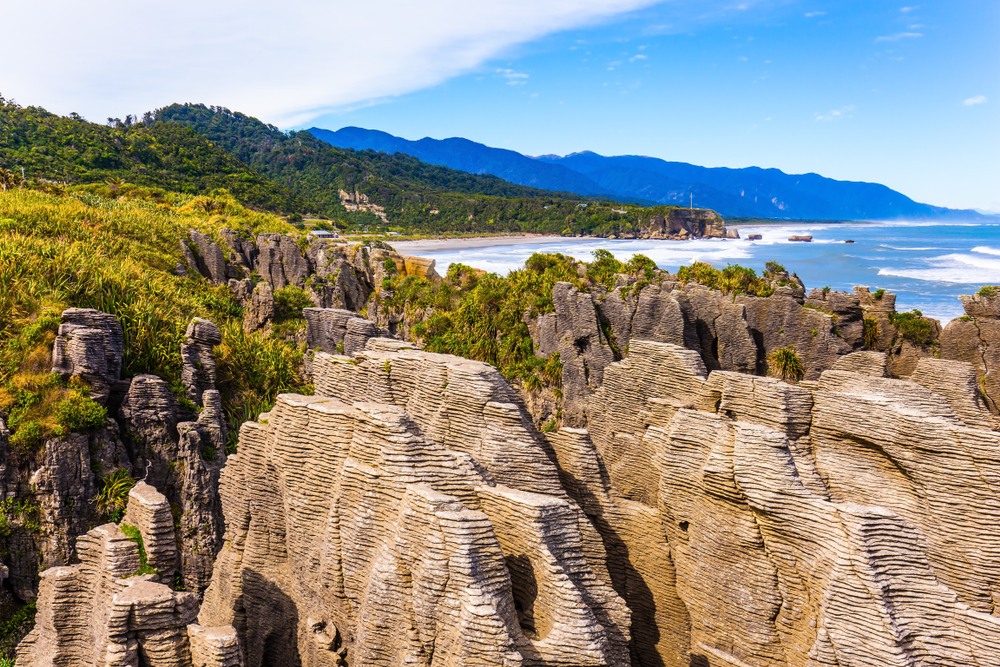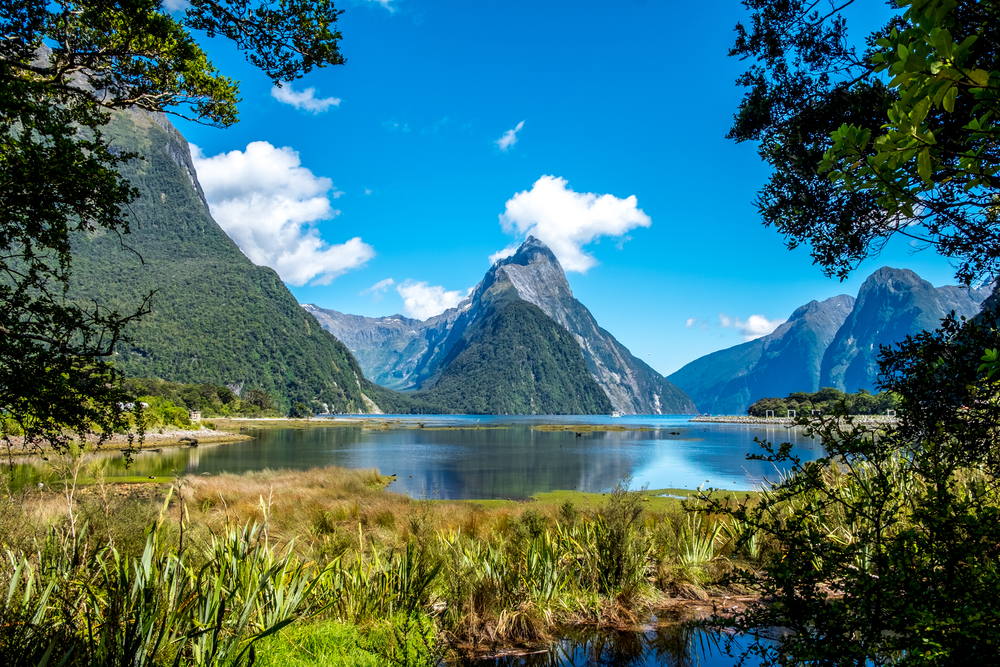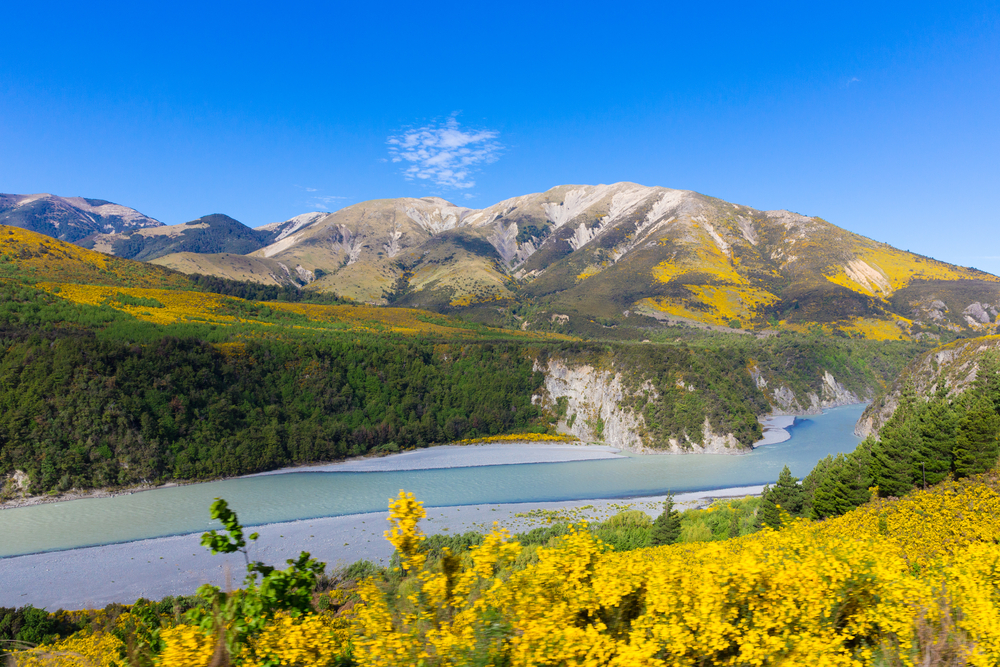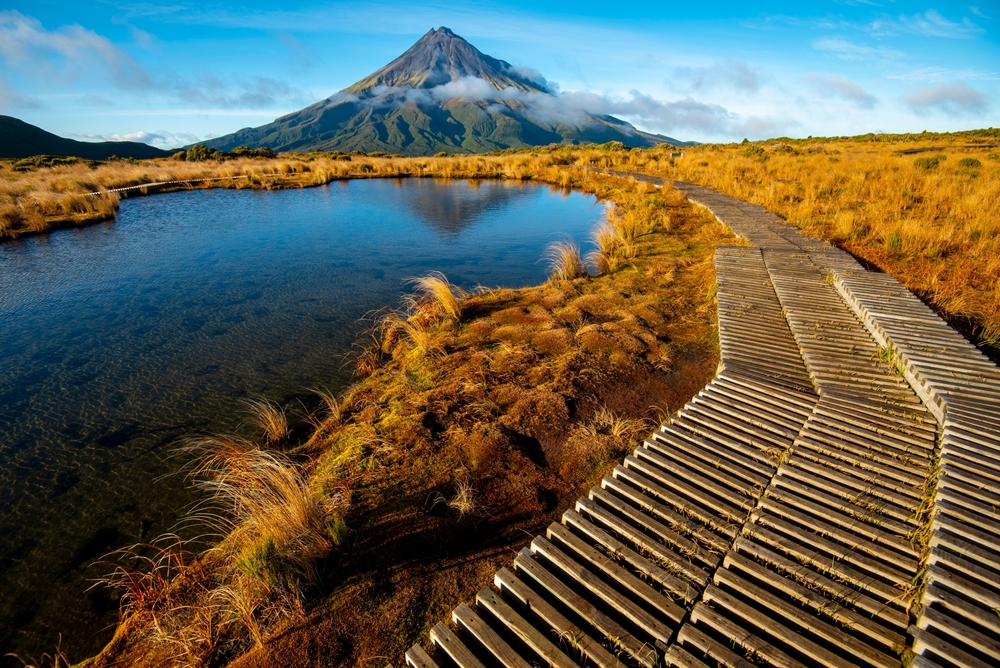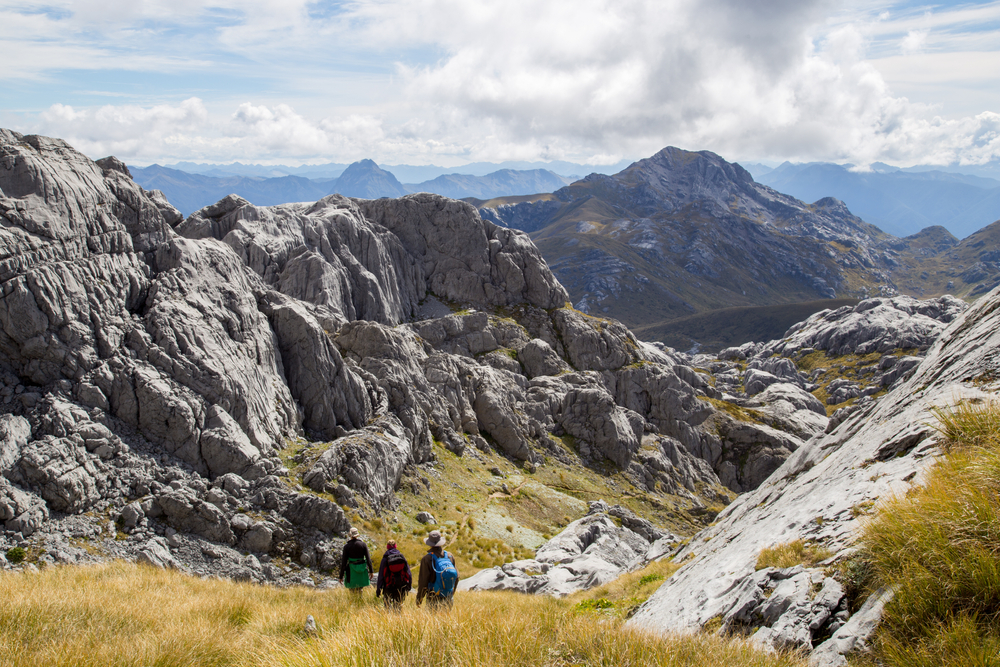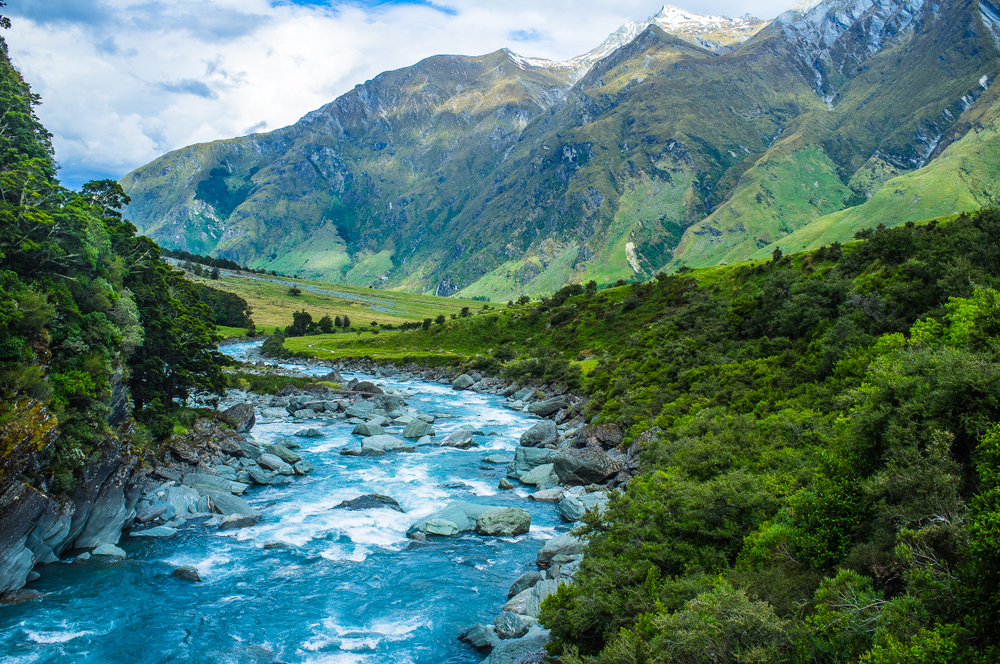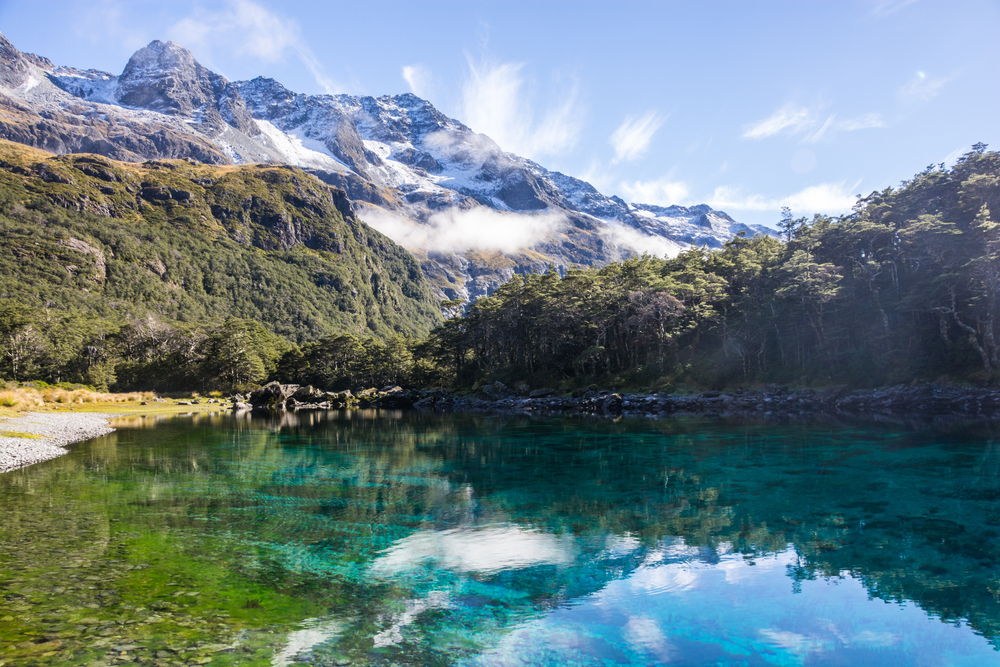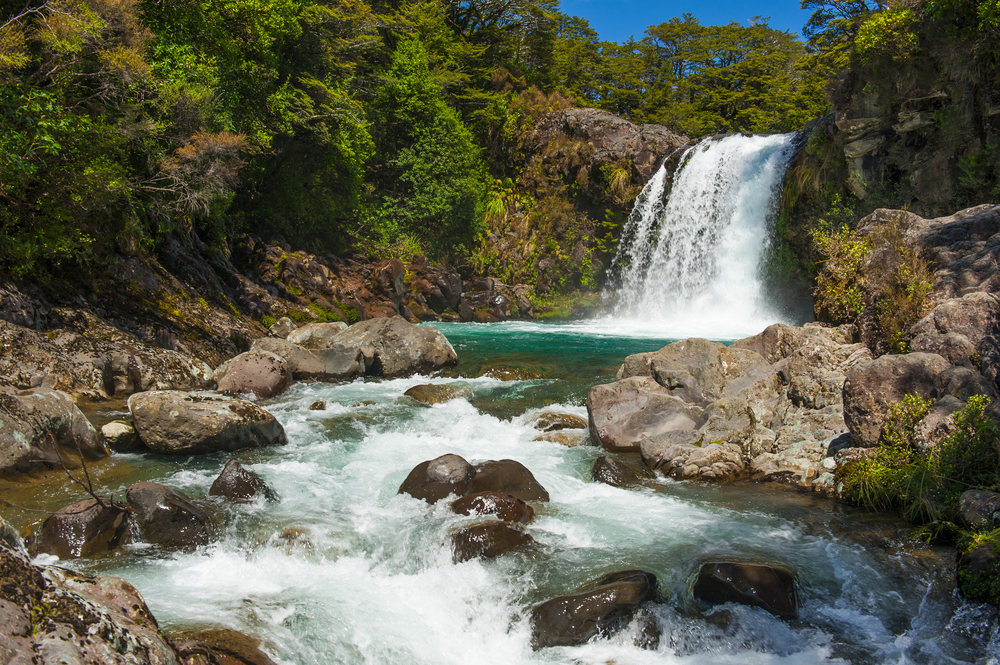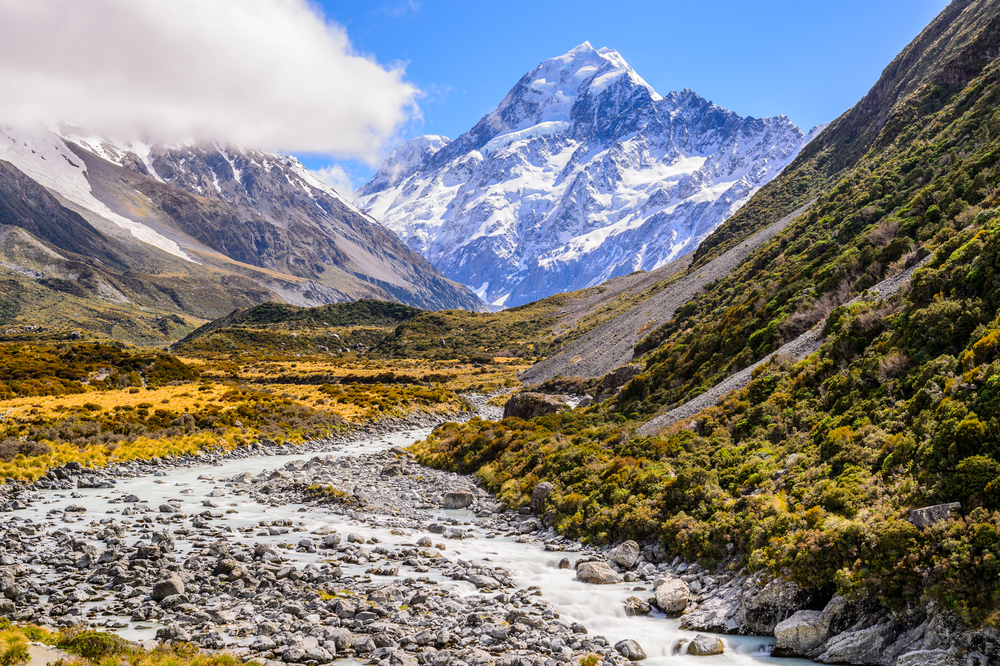Paparoa Overview
Paparoa National Park, located on the west coast of New Zealand’s South Island, spans approximately 167 square miles (432 square kilometers). Established in 1987, the park is known for its dramatic limestone formations, lush rainforests, and rugged coastline.
The name “Paparoa” comes from the Māori language, meaning “long place,” a reference to the extensive mountain ranges that define the region. The park stretches from the Tasman Sea inland to the Paparoa Range, with its highest peaks, such as Mount Bovis and Mount Barrytown, rising above the dense forests and limestone plateaus.
The most famous geological feature of the park is the Pancake Rocks and Blowholes at Punakaiki, where layers of limestone have been eroded into stacked formations resembling pancakes, with seawater surging dramatically through natural blowholes during high tide.
The landscape of Paparoa National Park is characterized by karst terrain, deep river gorges, and dense temperate rainforest. The park’s vegetation is exceptionally diverse, featuring towering rimu, kahikatea, and mataī trees, which form a rich canopy over an understory of ferns, mosses, and nikau palms.
The unique combination of coastal and alpine environments supports an array of plant life, including rare orchids and carnivorous plants that thrive in the limestone-rich soil. The park’s rivers, including the Pororari and Punakaiki, carve deep gorges through the forest, creating dramatic scenery and providing vital freshwater ecosystems.
Paparoa National Park is home to a variety of wildlife, including some of New Zealand’s most iconic and endangered species. The park’s dense forests shelter the great spotted kiwi, a nocturnal bird that is rarely seen but whose calls can be heard at night. Other bird species include the kererū (New Zealand pigeon), tūī, bellbird, and the more elusive whio (blue duck), which inhabits the fast-flowing rivers.
Along the coastal areas, visitors might spot Hector’s dolphins, one of the world’s rarest dolphin species, as well as fur seals basking on rocky shores. The park’s mammal population is relatively limited, as New Zealand’s native fauna is predominantly avian, but introduced species such as possums and stoats pose conservation challenges to the native birdlife.
One of the park’s most popular features is the Paparoa Track, a Great Walk that offers hikers and mountain bikers an opportunity to traverse the rugged interior of the park, passing through alpine ridges, limestone canyons, and lush rainforest. The track provides breathtaking views of the Tasman Sea and the surrounding mountains, making it a favorite for adventurers.
Other trails, such as the Pororari River Track and the Truman Track, offer shorter but equally scenic experiences, leading to stunning river gorges, coastal cliffs, and secluded beaches. Caving is another popular activity in the park, with the extensive limestone cave systems providing opportunities for exploration, including the well-known Metro Cave, which offers guided tours showcasing underground rivers and glowworm displays.
Paparoa National Park faces several conservation challenges, including the impact of introduced predators on native bird populations and the effects of climate change on coastal erosion and habitat stability. Conservation efforts have included intensive predator control programs aimed at protecting kiwi populations and other native birds, as well as initiatives to restore degraded forest areas.
The creation of the Paparoa Track in collaboration with local iwi (Māori tribes) and conservation groups has been a major success, providing both recreational opportunities and increased awareness of the park’s ecological significance. As a testament to its natural beauty and biodiversity, Paparoa National Park remains a vital part of New Zealand’s conservation efforts and a treasured destination for nature enthusiasts.








































































